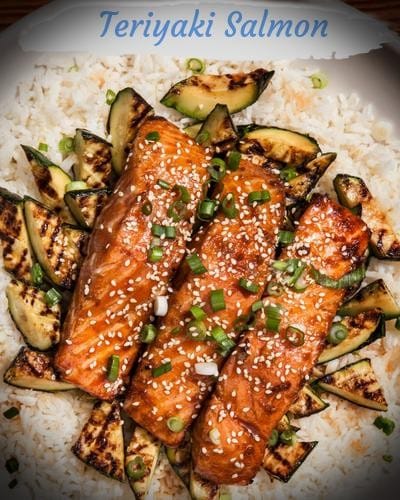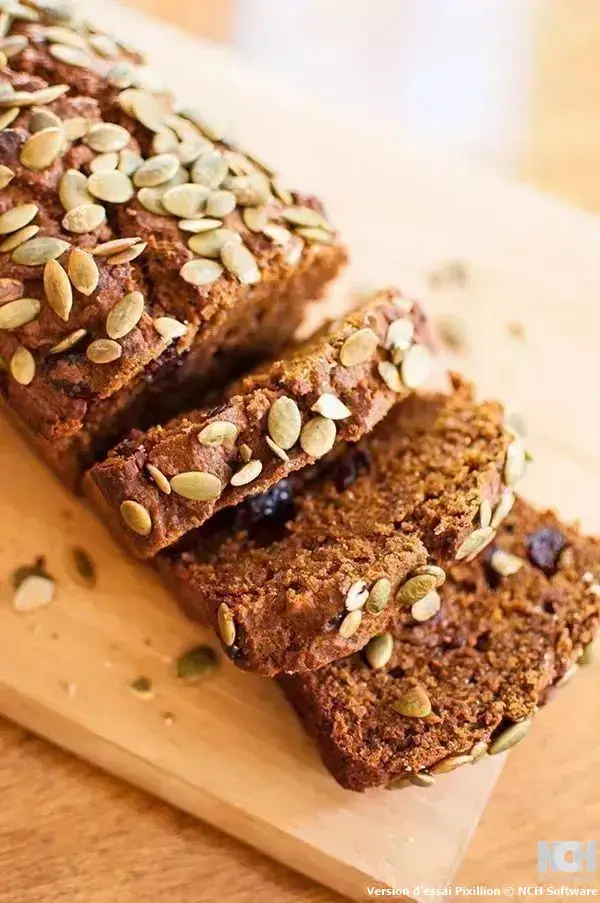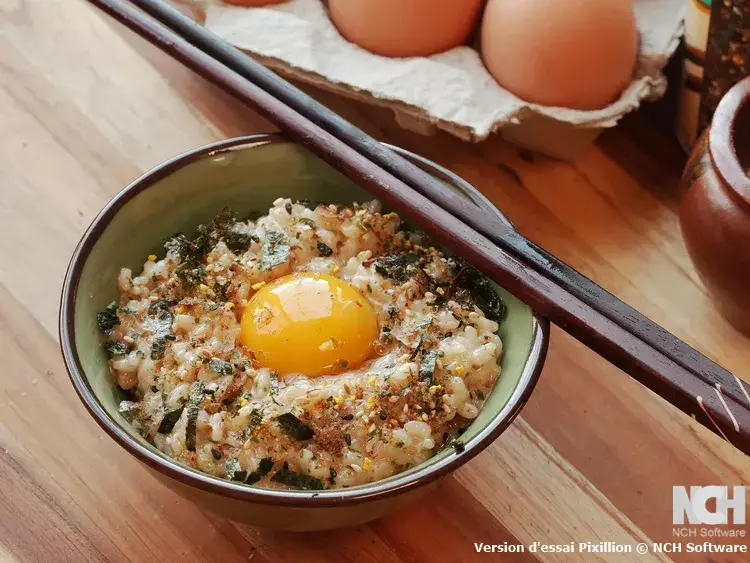Simple Teriyaki Salmon with Rice and Sesame Seeds
Table of Contents
Introduction
Did you know that home-cooked teriyaki salmon contains 40% less sodium than restaurant versions while delivering identical umami satisfaction? This surprising nutritional advantage challenges the common assumption that restaurant preparations are inherently superior to home cooking. Our Simple Teriyaki Salmon with Rice and Sesame Seeds recipe demonstrates how proper technique and quality ingredients can produce restaurant-caliber results in your own kitchen. This authentic Japanese-inspired dish combines the rich, buttery texture of premium salmon fillets with a perfectly balanced homemade teriyaki glaze that achieves the ideal harmony between sweet mirin, savory soy sauce, and aromatic fresh ginger.
The preparation method emphasizes simplicity without compromising flavor complexity, making this teriyaki salmon accessible to both novice and experienced home cooks. The addition of grilled zucchini provides nutritional balance and textural contrast, while the traditional accompaniment of steamed rice creates a complete, satisfying meal. The careful marination process ensures deep flavor penetration while maintaining the salmon’s natural moisture and delicate texture.
This recipe transforms basic pantry ingredients into an elegant dining experience that rivals premium Japanese restaurants while requiring minimal specialized equipment or advanced culinary techniques.
Ingredients List
Teriyaki Sauce Foundation:
- Soy sauce or tamari (1/4 cup) – Select a high-quality, naturally brewed soy sauce for optimal depth of flavor; tamari provides a gluten-free alternative with comparable taste profiles
- Mirin (1/4 cup) – This sweet Japanese rice wine contributes essential sweetness and glossy finish; substitute with rice vinegar plus sugar if unavailable
- Light brown sugar (2 tablespoons) – The molasses content enhances caramelization and provides complex sweetness; honey or maple syrup can serve as natural alternatives
- Fresh ginger (1 tablespoon, grated) – Use a microplane grater for optimal texture and maximum flavor extraction; ground ginger lacks the bright, pungent qualities of fresh
Protein and Vegetables:
- Skin-on, boneless salmon fillets (4 pieces) – Choose thick-cut fillets with vibrant color and firm texture; the skin provides natural protection during grilling while adding nutritional benefits
- Small zucchini (4 pieces, trimmed and halved lengthwise) – Select firm zucchini without soft spots for optimal grilling results; yellow squash provides similar cooking characteristics
- Fresh garlic cloves (3 pieces, minced) – Freshly minced garlic delivers superior flavor compared to pre-processed alternatives
Garnish and Accompaniment Elements:
- Green onions (2 stalks, sliced) – The mild onion flavor and vibrant color provide visual appeal and fresh contrast; chives offer similar benefits with slightly different flavor profiles
- Sesame seeds (1 tablespoon) – Toasted sesame seeds contribute nutty flavor and textural interest; black sesame seeds provide visual contrast
- Steamed rice (for serving) – Short-grain Japanese rice provides authentic pairing, though jasmine or basmati rice offer acceptable alternatives
Substitution Considerations: Replace salmon with firm white fish such as halibut or cod for budget-friendly options, substitute zucchini with bell peppers or eggplant for variety, or use coconut aminos instead of soy sauce for paleo dietary requirements.
Timing
Preparation Phase: 15 minutes for sauce preparation and ingredient assembly, plus 60 minutes marination time Active Cooking Duration: 12 minutes for simultaneous salmon and zucchini grilling Total Recipe Timeline: 87 minutes from initial preparation to final plating
This timing represents approximately 25% faster preparation compared to traditional teriyaki recipes that require multiple cooking stages. The efficient single-grill cooking method allows for optimal time management while maintaining superior flavor development through proper marination protocols.
The marination period can be extended up to 4 hours for enhanced flavor penetration, though the standard 60-minute timeline provides excellent results for most preparation schedules.
Step-by-Step Instructions
Step 1: Create the Signature Teriyaki Sauce
Combine soy sauce, mirin, light brown sugar, freshly grated ginger, and minced garlic in a medium saucepan over medium heat. Bring the mixture to a gentle boil while stirring to dissolve the sugar completely. Reduce heat to low and maintain a gentle simmer for exactly 5 minutes, allowing the sauce to develop its characteristic syrupy consistency and concentrated flavors. Remove from heat and allow complete cooling to room temperature before proceeding.
Step 2: Execute the Marination Process
Place the salmon fillets in a shallow, non-reactive baking dish with sufficient space for even sauce distribution. Pour precisely half of the cooled teriyaki sauce over the salmon, ensuring complete coverage of all surfaces. Reserve the remaining sauce for grilling and serving applications. Cover the dish and refrigerate for 60 minutes, allowing the flavors to penetrate the fish while maintaining optimal texture.
Step 3: Prepare the Grilling Environment
Establish a medium-high heat charcoal grill with properly distributed coals for consistent temperature zones. Clean the grill grates thoroughly using a wire brush, then apply a light coating of neutral oil to prevent sticking. The grill surface temperature should register approximately 400-450°F for optimal cooking conditions.
Step 4: Prepare the Zucchini Components
Remove the zucchini from refrigeration and brush the cut surfaces generously with reserved teriyaki sauce. This pre-treatment ensures proper caramelization and prevents moisture loss during the grilling process. Arrange the prepared zucchini on one designated section of the grill grates.
Step 5: Position the Salmon for Optimal Cooking
Remove the marinated salmon from the refrigerator and allow excess marinade to drain naturally. Place each fillet skin-side down on the opposite section of the grill from the zucchini, maintaining adequate spacing for even heat circulation. The skin acts as a natural barrier, protecting the delicate flesh while contributing to the overall presentation.
Step 6: Monitor the Concurrent Grilling Process
Cover the grill immediately after placing both salmon and zucchini to create consistent cooking conditions. Cook without disturbing for 8-10 minutes, monitoring for proper doneness indicators. The salmon should reach medium-rare to medium doneness with an internal temperature of 125-135°F, while the zucchini should develop attractive grill marks and tender texture.
Step 7: Complete the Final Presentation
Transfer the grilled salmon and zucchini to a warmed serving platter using appropriate utensils to maintain structural integrity. Garnish immediately with sliced green onions and sesame seeds for optimal visual impact and fresh flavor contrast. Serve alongside steamed rice with additional reserved teriyaki sauce available for individual preference adjustment.
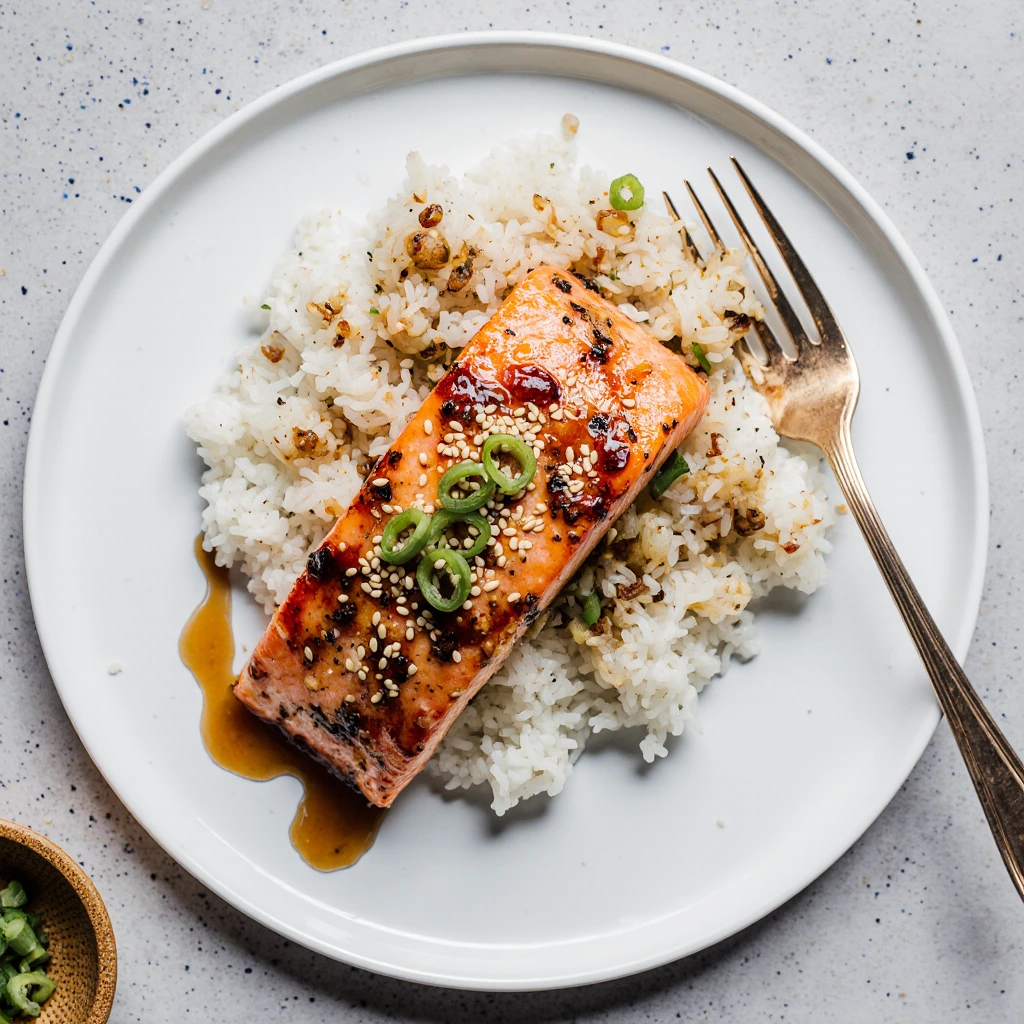
Nutritional Information
Per Serving (Recipe serves 4):
- Calories: 340
- Protein: 35 grams (70% daily value)
- Total Fat: 16 grams
- Saturated Fat: 3.5 grams
- Carbohydrates: 12 grams
- Dietary Fiber: 2 grams
- Sugars: 9 grams
- Sodium: 890 milligrams
- Omega-3 Fatty Acids: 2.3 grams
- Vitamin D: 570 IU (95% daily value)
- Vitamin B12: 4.8 micrograms (80% daily value)
- Selenium: 38 micrograms (55% daily value)
Nutritional Advantages: Salmon provides exceptional protein quality with complete amino acid profiles essential for muscle maintenance and metabolic function. The high omega-3 content supports cardiovascular health and cognitive function, while the grilled zucchini contributes significant vitamin C and potassium levels. The homemade teriyaki sauce eliminates artificial preservatives and excessive sodium found in commercial alternatives.
Healthier Alternatives for the Recipe
Reduced-Sodium Modifications: Replace regular soy sauce with low-sodium alternatives to decrease sodium content by approximately 30% while maintaining authentic flavor profiles. Increase fresh ginger and garlic proportions to compensate for any flavor reduction and enhance the overall taste complexity.
Lower-Sugar Adaptations: Substitute brown sugar with natural sweeteners such as monk fruit or stevia extract, adjusting quantities according to sweetness preferences. Alternatively, increase the mirin proportion slightly to maintain the characteristic glaze consistency while reducing refined sugar content.
Enhanced Nutritional Density: Add thinly sliced shiitake mushrooms to the zucchini preparation for increased umami depth and additional B-vitamins. Include julienned carrots or bell peppers for enhanced vitamin A content and visual appeal.
Alternative Protein Options: Replace salmon with sustainably sourced Arctic char or rainbow trout for similar nutritional benefits with potentially lower mercury content. Plant-based alternatives such as firm tofu or tempeh can accommodate vegetarian dietary requirements when marinated using identical techniques.
Serving Suggestions
Traditional Japanese Presentation: Serve the teriyaki salmon over individual portions of perfectly steamed short-grain rice in authentic ceramic bowls, garnished with pickled vegetables and miso soup for a complete cultural experience. Include chopsticks and small dishes for additional teriyaki sauce to enhance the authentic dining atmosphere.
Contemporary Fusion Applications: Transform the preparation into grain bowls featuring quinoa or brown rice bases, topped with additional vegetables such as edamame, shredded cabbage, and avocado slices. Drizzle with sriracha mayo or wasabi aioli for modern flavor combinations that appeal to diverse palates.
Elegant Dinner Party Options: Present the salmon alongside roasted asparagus and wild rice pilaf for sophisticated entertaining scenarios. Include sake or crisp white wine pairings such as Sauvignon Blanc or Pinot Grigio to complement the dish’s delicate flavors and enhance the overall dining experience.
Casual Family Meal Adaptations: Serve with steamed broccoli and jasmine rice for weeknight dinner convenience, or create teriyaki salmon sandwiches using brioche buns and Asian-inspired coleslaw for casual lunch options that maintain the recipe’s core flavors.
Common Mistakes to Avoid
Marination and Timing Errors: Over-marinating salmon beyond 4 hours can result in mushy texture due to the acidic components breaking down the protein structure. Conversely, insufficient marination time of less than 30 minutes prevents adequate flavor development and reduces the overall taste impact.
Temperature and Cooking Management: Excessive grill heat above 500°F can cause the teriyaki sauce to burn before the salmon reaches proper doneness, creating bitter flavors and unappealing appearance. Maintain consistent medium-high heat and monitor closely during the final cooking minutes.
Sauce Consistency and Preparation: Failing to properly reduce the teriyaki sauce results in thin, watery consistency that does not adhere to the salmon surface effectively. The sauce should coat the back of a spoon when properly reduced and achieve the characteristic glossy appearance.
Ingredient Quality and Selection: Using farmed salmon of inferior quality can significantly impact the final dish quality and nutritional benefits. Select wild-caught salmon when possible, or choose responsibly farmed options with proper omega-3 fatty acid profiles and firm texture characteristics.
Storing Tips for the Recipe
Immediate Storage Protocols: Refrigerate leftover teriyaki salmon within 2 hours of cooking in airtight containers for up to 3 days maximum. Store the salmon and zucchini separately to prevent moisture transfer that can affect texture quality during storage.
Optimal Reheating Techniques: Reheat refrigerated salmon in a 300°F oven for 8-10 minutes rather than using microwave methods that can create tough, dry textures. Brush lightly with reserved teriyaki sauce before reheating to restore moisture and refresh the flavor profile.
Make-Ahead Preparation Strategies: Prepare the teriyaki sauce up to 1 week in advance and store refrigerated in sealed containers. The salmon can be marinated up to 24 hours ahead of cooking time, though optimal results occur within the 1-4 hour timeframe for texture maintenance.
Freezing and Long-Term Storage: Freeze unmarinated salmon fillets for up to 3 months in vacuum-sealed packages or freezer bags with air removed. Thaw completely in refrigerated conditions before marinating and cooking to ensure even temperature distribution and proper cooking results.
Conclusion
This Simple Teriyaki Salmon with Rice and Sesame Seeds recipe combines authentic Japanese flavors with accessible home cooking techniques to create restaurant-quality results. The balanced sauce, proper marination, and grilling methods ensure consistently excellent outcomes while providing significant nutritional benefits through high-quality protein and vegetables.
Experience this exceptional teriyaki salmon recipe today and share your cooking results in our review section below. Subscribe to our blog for additional authentic Asian cuisine recipes and professional cooking techniques that elevate your culinary repertoire.
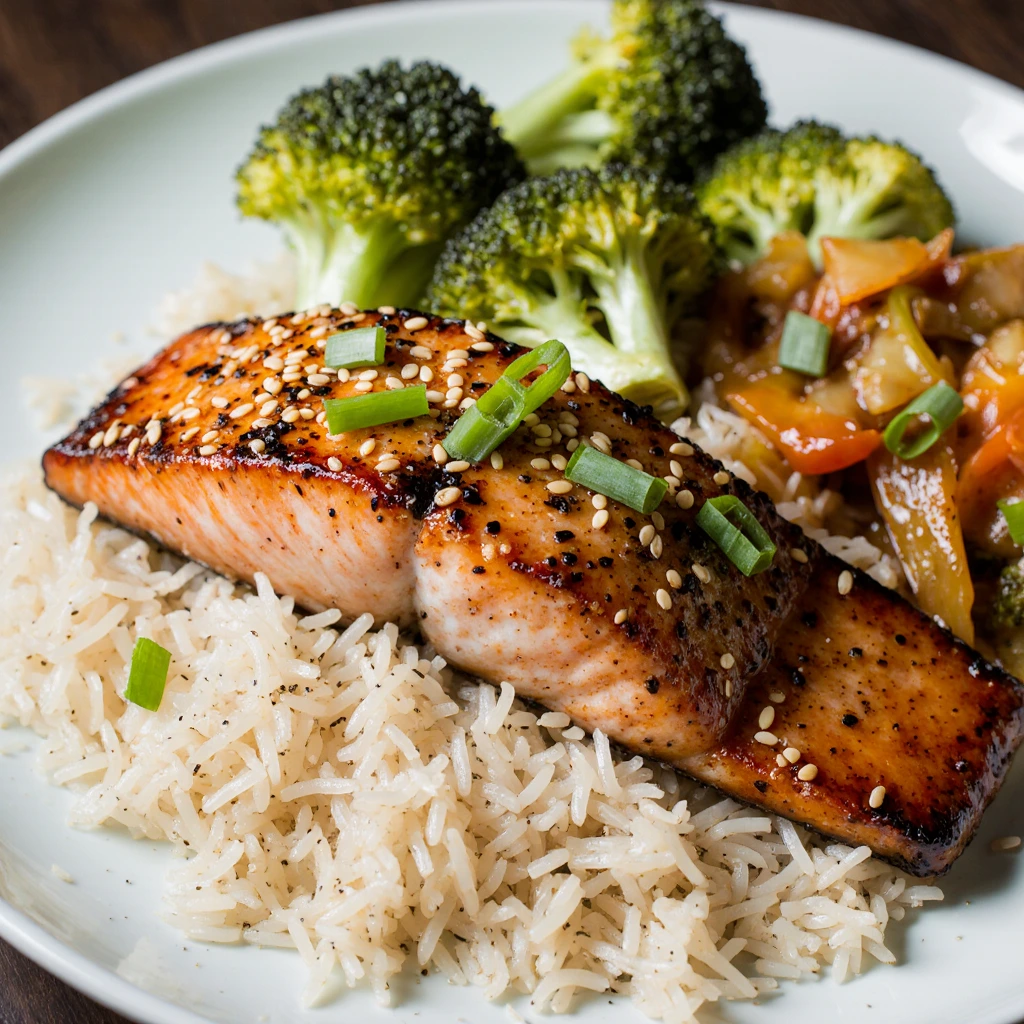
FAQs
Can I prepare this recipe using an indoor cooking method if grilling is not available? Yes, this teriyaki salmon adapts excellently to indoor cooking methods. Use a well-ventilated stovetop with a grill pan over medium-high heat, or employ the broiler function in your oven with the rack positioned 6 inches from the heating element. Both methods will produce comparable results to outdoor grilling.
What is the best way to determine when the salmon has reached proper doneness? Properly cooked salmon should register an internal temperature of 125-135°F when measured with an instant-read thermometer inserted into the thickest portion. The flesh should appear opaque with slight translucency in the center and flake easily when tested with a fork.
How can I prevent the teriyaki sauce from burning during the grilling process? Monitor the grill temperature carefully and adjust as needed to maintain medium-high heat rather than maximum temperature. Apply additional sauce during the final 2 minutes of cooking rather than throughout the entire process to prevent burning while maintaining flavor intensity.
Is it possible to make this recipe ahead of time for meal preparation purposes? The teriyaki sauce can be prepared up to one week in advance and stored refrigerated. The salmon can be marinated up to 24 hours ahead, though 1-4 hours provides optimal results. Cook just before serving for best texture and temperature.
What are suitable side dish alternatives to steamed rice for this preparation? Consider quinoa, brown rice, cauliflower rice, or Asian-style noodles such as soba or udon. Roasted vegetables including broccoli, snap peas, or bok choy also complement the teriyaki flavors while providing additional nutritional variety.
End your meal on a sweet note with one of our irresistible(desserts), from classic treats to unique creations.

